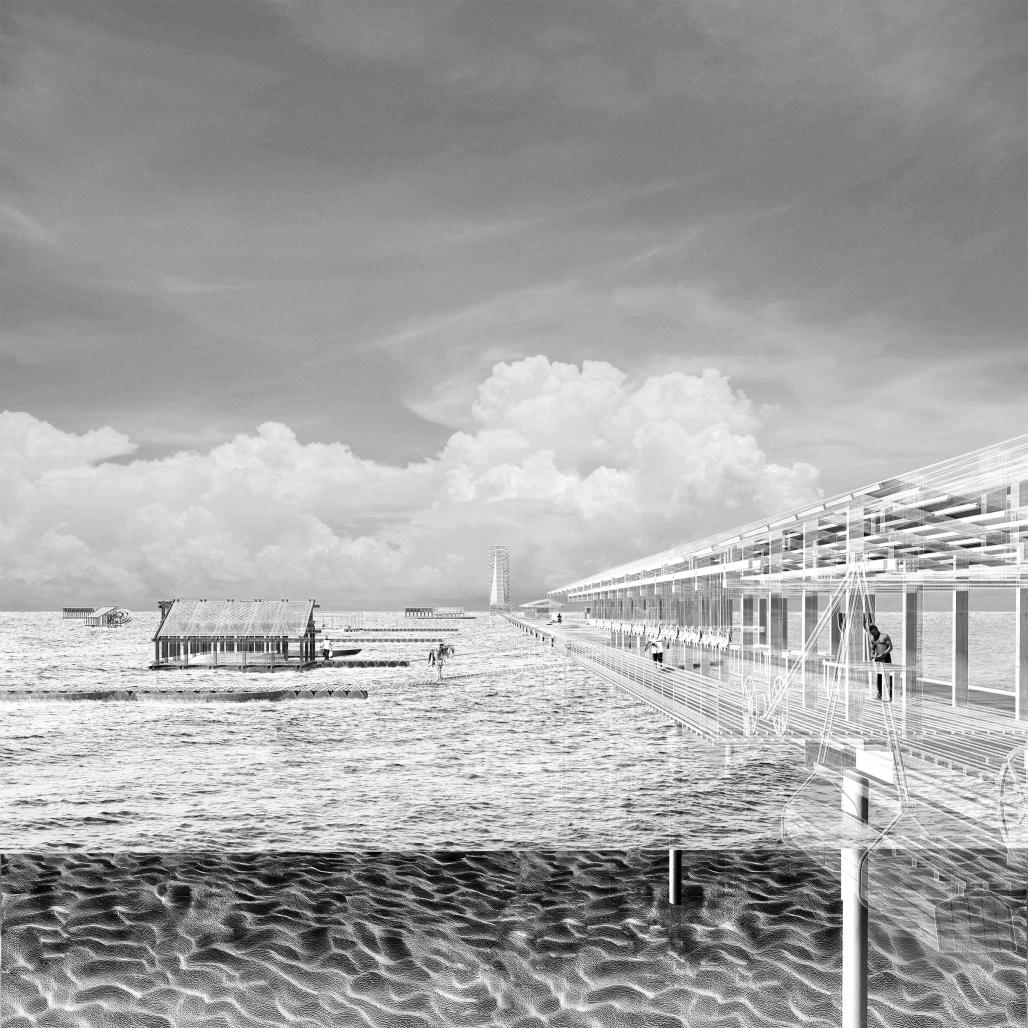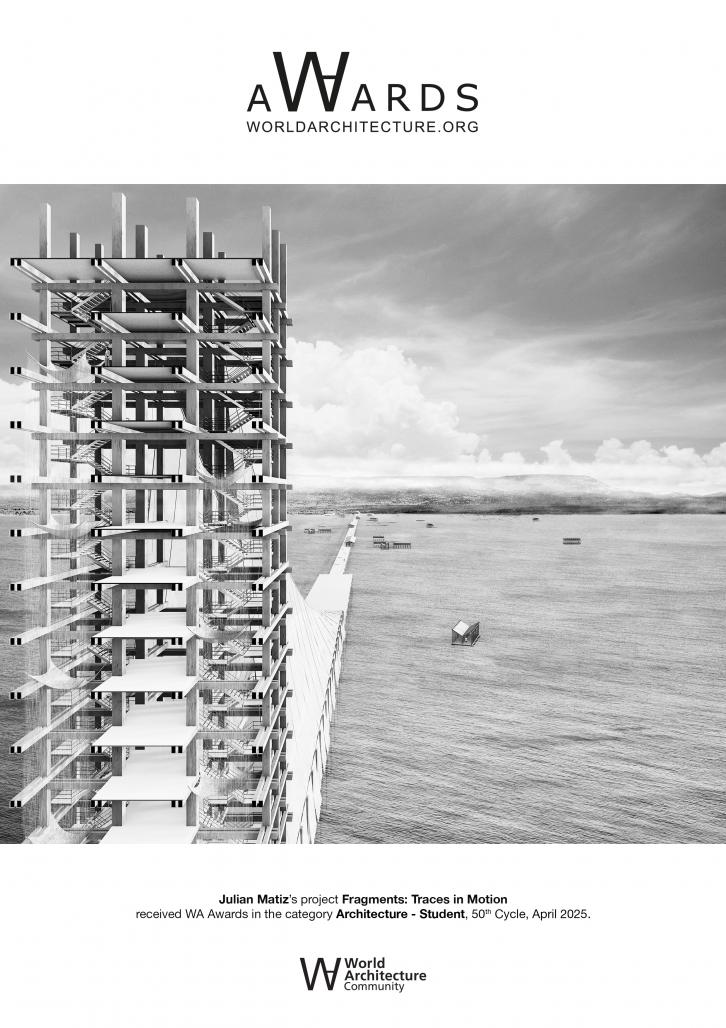In a region where extractivist practices define spatial dimensions, the relationship with the landscape takes a back seat, reduced to a secondary role in favor of industrial expansion. In Dibulla, a port emerges as a rigid imposition on the territory, extending into the sea and splitting the horizon, disrupting its natural dynamics, ecologies, and rhythms. This intrusion alters the delicate balance between land and water, raising the question: How can such a structure be integrated into the landscape without erasing its essence?
The project seeks to challenge this imposed industrial line, a human intervention that prioritizes efficiency over coexistence. Rather than perpetuating a strictly functional approach, it proposes inhabiting the landscape, not as a passive observer but as an active participant. This vision fosters an architecture that engages the senses, embraces the fluidity of the environment, and acknowledges its perpetual transformation.
By recognizing the inevitability of change, the intervention does not reject the existing structure but reinterprets it. It embraces the line drawn across the liquid expanse, reimagining it as a point of convergence rather than division. Through this new trace, the project offers an opportunity to reconcile community and nature, creating spaces that revive artisanal practices, restore ecological balance, and establish a renewed relationship with the horizon, one that respects, rather than dominates, the ever-evolving landscape.
2024
At the far end of an intrusive industrial line, a mining port is located in the municipality of Dibulla. This structure extends 2 km into the sea, causing significant fragmentation of its surroundings. The infrastructure drastically alters both the terrestrial and marine ecosystems, disrupting natural dynamics and the lives of the region’s inhabitants.
Wood structures are raised on the concrete portuary infrastructure, allowing the reinstatement of the structure with nature and people.
Static elements are subtly placed upon the route, where each one of them responds to specific dynamics that were previously developed on the site.
The end of the port has a unique condition due to its deep extension into the sea. It reaches an ambiguous point where the distinction between sky and earth fades.
Thus, the tower emerges—an element that elevates the horizon, redefining the relationship between architecture and landscape. Designed with a sensory approach, the tower seeks to create experiences shaped by the surrounding conditions. Fabric becomes the medium that amplifies the vastness of the landscape: light filters through it, bathing the space; wind sets it in motion; and water accompanies the journey toward the tower.
At the same time, the tower serves a functional purpose: collecting water from the air to supply all the activities developed throughout the project.
In this way, the idea of inhabiting the landscape goes beyond mere contemplation. It fosters an architecture that connects the senses with the environment, acknowledging the perpetual movement to which it is subjected.
Design: Julian Matiz
Tutors: Claudio Rossi, Daniela Atencio, Daniel Bonilla
Fragments: Traces in Motion by julian Matiz in Colombia won the WA Award Cycle 50. Please find below the WA Award poster for this project.

Downloaded 0 times.






















